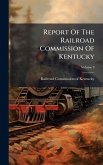In the past, federal involvement in the development of intercity passenger rail has historically been quite limited. This has changed considerably in the past several years, beginning with the passage of important legislation such as the Passenger Rail Investment and Improvement Act (PRIIA) and the Rail Safety Improvement Act (RSIA) in 2008, and continuing with President Obama's announcement of a High-Speed Rail Vision in April 2009. Federal funding is now available for the development of high-speed and intercity passenger rail (HSIPR), including an initial $8 billion in grant funds made available under the American Recovery and Reinvestment Act (ARRA), as well as other passenger rail development funds made available under the federal budget and PRIIA. This report addresses some of the Federal Railroad Administration's (FRA) plans and decisions. This work has been selected by scholars as being culturally important, and is part of the knowledge base of civilization as we know it. This work was reproduced from the original artifact, and remains as true to the original work as possible. Therefore, you will see the original copyright references, library stamps (as most of these works have been housed in our most important libraries around the world), and other notations in the work. This work is in the public domain in the United States of America, and possibly other nations. Within the United States, you may freely copy and distribute this work, as no entity (individual or corporate) has a copyright on the body of the work. As a reproduction of a historical artifact, this work may contain missing or blurred pages, poor pictures, errant marks, etc. Scholars believe, and we concur, that this work is important enough to be preserved, reproduced, and made generally available to the public. We appreciate your support of the preservation process, and thank you for being an important part of keeping this knowledge alive and relevant.
Bitte wählen Sie Ihr Anliegen aus.
Rechnungen
Retourenschein anfordern
Bestellstatus
Storno








